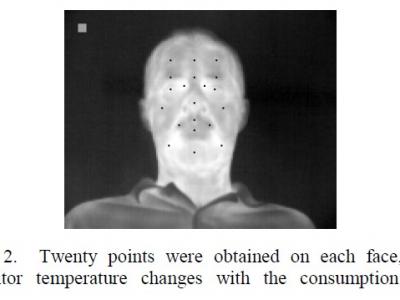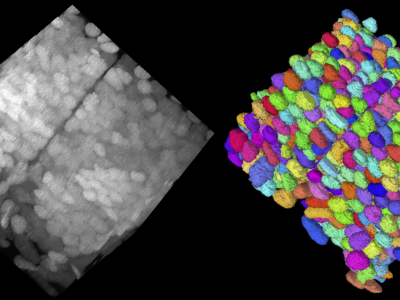Neuroscience
Design of EEG-TMS experiment. The figure shows the timeline of the experimental session, the illustration of the typical sequence of the visual cues and the structure of one trial, and the illustration of the time intervals of interest within a trial: Pre is the baseline pre-que interval [-4.5 -0.5] s; Post is the post-cue interval [0 0.5] s; Img is the interval [1 3] s of motor imagery execution; here, t=0 corresponds to the moment of the appearance of the visual cue to start the movement.
- Categories:
 206 Views
206 Views
The paired 3T-7T MRI dataset includes T1- and T2-weighted whole-brain MRI of each participant performed on an investigational 7T MAGNETOM MR system with a 32-channel receiver and a 1-channel transmit birdcage head coil (Nova Medical, Wilmington, MA, USA) and a 3T MAGNETOM Prisma MR system equipped with a 64-channel eachphased-array head coil (Siemens Healthineers, Erlangen, Germany) on the same day at Beijing MRI Center for Brain Research (BMCBR). Twenty volunteers aged 18-25 years (10 males and 10 females) recruited from a university were enrolled.
- Categories:
 805 Views
805 ViewsGestational diabetes is a type of high blood sugar that develops during pregnancy. It can occur at any stage of pregnancy and cause problems for both the mother and the baby, during and after birth. The risks can be reduced if they are early detected and managed, especially in areas where only periodic tests of pregnant women are available. Intelligent systems designed by machine learning algorithms are remodelling all fields of our lives, including the healthcare system. This study proposes a combined prediction model to diagnose gestational diabetes.
- Categories:
 4067 Views
4067 ViewsFive users aged 23, 25, 31, 42, and 46 participated in the experiment. The users sat comfortably in a chair. A green LED of 1 cm diameter was placed at a distance of about 1 meter from a person's eyes. EEG signals were recorded using g.USBAmp with 16 active electrodes. The users were stimulated with flickering LED lights with frequencies: 5 Hz, 6 Hz, 7 Hz, and 8 Hz. The stimulation lasted 30 seconds. The recorded signals were divided into the data used for training, the first 20 seconds, and the data used for testing, the next 10 seconds, for each signal.
- Categories:
 790 Views
790 ViewsThis dataset contains information about published papers on how biological signals (ECG, EEG, EDA and MG + eye-tracking) are being used and collected in the field of video games. This dataset reflects the information published including the choice of signals, the devices used to collect them (e.g., wearables), the purposes for which they are collected, and the main results reported from their use.
- Categories:
 443 Views
443 Views
The use of modern Mobile Brain-Body imaging techniques, combined with hyperscanning (simultaneous and synchronous recording of brain activity of multiple participants) has allowed researchers to explore a broad range of different types of social interactions from the neuroengineering perspective. In specific, this approach allows to study such type of interactions under an ecologically valid approach.
- Categories:
 411 Views
411 Views
The EegDot data set (EEG data evoked by Different Odor Types established by Tianjin University) collected using a Cerebus neural signal acquisition equipment involved thirteen odor stimulating materials, five of which (smelling like rose (A), caramel (B), rotten (C), canned peach (D), and excrement (E)) were selected from the T&T olfactometer (from the Daiichi Yakuhin Sangyo Co., Ltd., Japan) and the remaining eight from essential oils (i.e., mint (F), tea tree (G), coffee (H), rosemary (I), jasmine (J), lemon (K), vanilla (L) and lavender (M)).
- Categories:
 1537 Views
1537 Views
The EegDot data set collected using a Cerebus neural signal acquisition equipment involed thirteen odor stimulating materials, five of which (smelling like rose (A), caramel (B), rotten (C), canned peach (D), and excrement (E)) were selected from the T&T olfactometer (from the Daiichi Yakuhin Sangyo Co., Ltd., Japan) and the remaining eight from essential oils (i.e., mint (F), tea tree (G), coffee (H), rosemary (I), jasmine (J), lemon (K), vanilla (L) and lavender (M)).
- Categories:
 342 Views
342 Views
The EegDoc data set collected using a Cerebus neural signal acquisition equipment involved 2 types of odors (smelling like roses and rotten odors), each with 5 concentrations. Five concentrations of the rose odor are expressed as A10-3.0 (A30), A10-3.5 (A35), A10-4.0 (A40), A10-4.5 (A45) and A10-5.0 (A50), and five concentrations of the rotten odor are expressed as C10-4.0 (C40), C10-4.5 (C45), C10-5.0 (C50), C10-5.5 (C55) and C10-6.0 (C60).
- Categories:
 520 Views
520 Views



